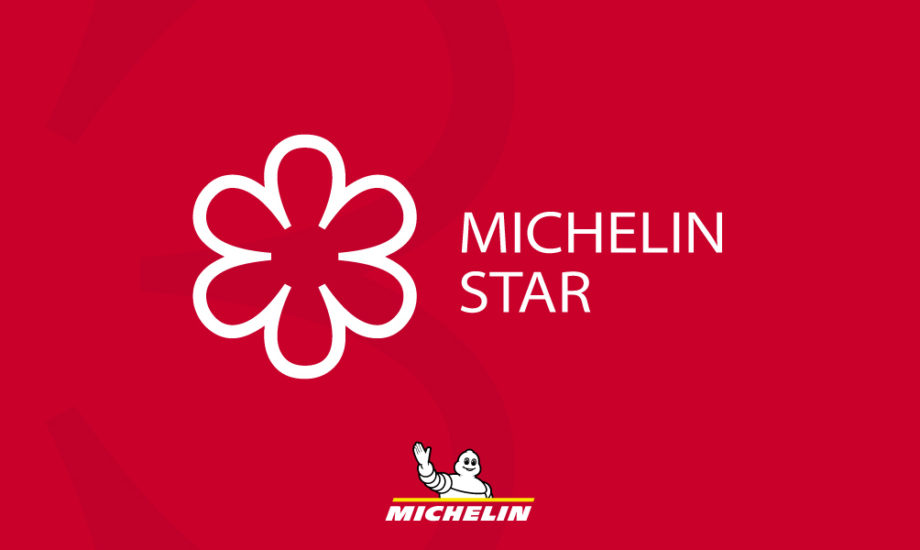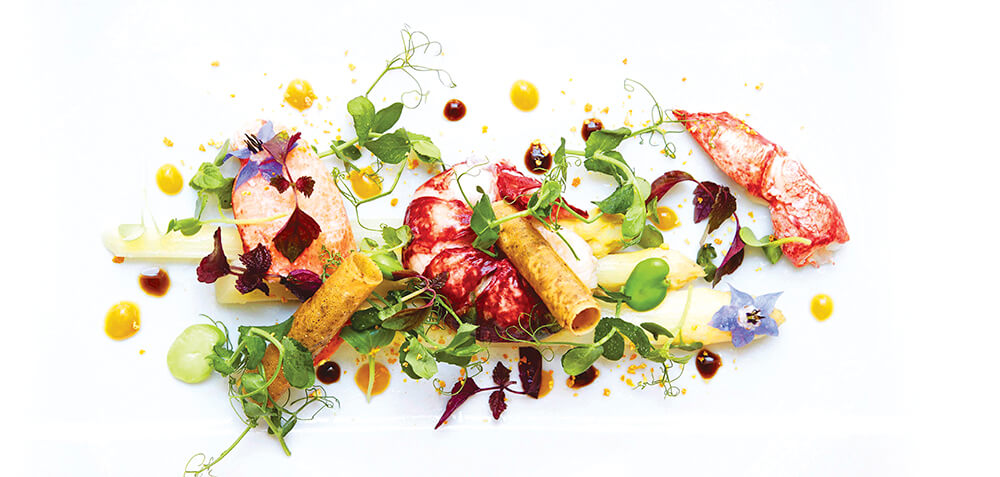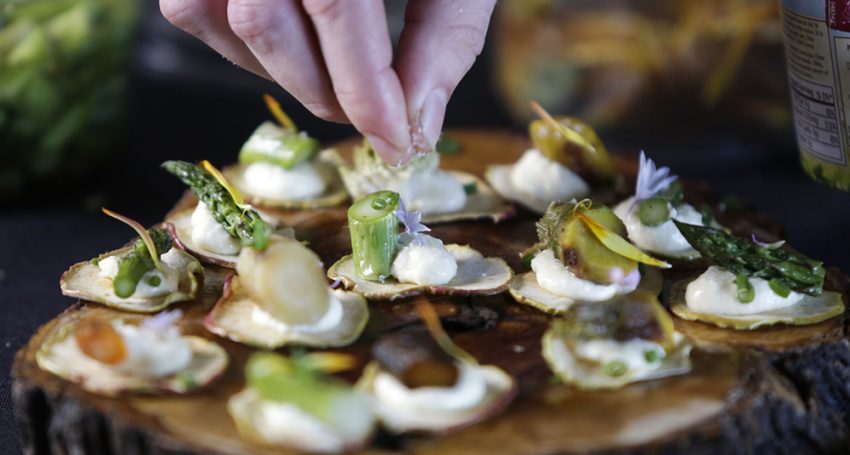Often, the stars are awarded to chefs, not restaurants, and if the chef leaves the restaurant, he takes his star with him. Each Michelin star is literally worth its weight in gold. It gives the restaurant prestige, status and queues of customers at the entrance and provides for exorbitant prices for meals on the menu. However, as is known, there is more than just receiving an award. It must also be held year after year. Each marked restaurant is visited by experts several times a year to make sure that everything remains at the same high level and becomes even better. That is why there are so few three-star Michelin restaurants in the world. In fact, there is just a little more than sixty.
History is full of cases where restaurants lost their stars (the raters are not entitled to take or to award more than one star per year). These will lead to unpredictable consequences.
A most publicised occurrence was an incident with a French chef, Bernard Loiseau, who committed suicide because of rumours about a possible downgrade of his restaurant from three to two-stars. Today, the country that holds the record for “stellar” restaurants is France (a total of 620 restaurants). In Paris alone, there are more 3-star restaurants than in the rest of Europe.
Michelin Guide (fr. Michelin, Le Guide Rouge) — the most famous and influential of restaurant rating in the world, whose history dates back to 1900, when one of the founders of the company Michelin, André Michelin, published the first guide to restaurants in France to help the rich gourmets choose the “right” restaurants while travelling.
Initially, Michelin had no relation to any restaurants or to cooking. There was the family owned small factory Michelin, which, in the late XIX century, was producing bicycle tires. Eventually, the brothers Edouard and Andre began to produce car tires.
Even back then, the brothers came up with the image of a nice man made up from tires; an image that is still the company’s logo. However, production needed to be extended, so the brothers decided to encourage people to travel, releasing colourful guides with an atlas of roads, parking places and hotels. As well, it provided information about where to eat.
Very soon, the free brochure turned into an expensive guide, listing the required “road” information in detail and the most expensive and prestigious hotels and restaurants in Europe.

20 years later, the most remarkable restaurants found by car travellers started to be marked with the star. However, there were many “one-star” restaurants, so it was decided that it would be a lot better to evaluate cuisine using up to “three-stars”. Over time, the list of restaurants that generously accompanied the maps found a place of its own and an independent guide was born.
Today, the Michelin guide is the most authoritative source of information on the best gastronomic establishments and to get in is a dream of any restaurant in the world. The restaurants contained in this guide are classified by stars (from one to three stars), which are a symbol of a very high recognition of any gastronomic institution.
If a restaurant has one Michelin star, this is a very good restaurant in its category. With two stars, dishes can already be considered as works of art and this restaurant is surely worth a brief diversion from the travel itinerary. Three stars are awarded to restaurants with greatly imaginative and uniquely scrumptious cuisines created by world-renowned chefs. It is worth it to take a separate trip here. Eating at some three-star restaurants can only be achieved by appointment (reservation) and should be booked in advance, possibly a month and a half before or earlier.
Interestingly, there are also the separately marked “non-stellar” restaurants that deserve mention, but are not considered “star” worthy. Thus, the entire classification is four-levelled.
Michelin stars are awarded each year. During the year, anonymous gourmets and travel experts evaluated various restaurants. The main criterion for the award of rating is the kitchen and nothing more, so it depends on the chef whether Michelin celebrates their institution or not.
Often, the stars are awarded to chefs, not restaurants, and if the chef leaves the restaurant, he takes his star with him. Each Michelin star is literally worth its weight in gold. It gives the restaurant prestige, status and queues of customers at the entrance and provides for exorbitant prices for meals on the menu. However, as is known, there is more than just receiving an award. It must also be held year after year. Each marked restaurant is visited by experts several times a year to make sure that everything remains at the same high level and becomes even better. That is why there are so few three-star Michelin restaurants in the world. In fact, there is just a little more than sixty.
History is full of cases where restaurants lost their stars (the raters are not entitled to take or to award more than one star per year). These will lead to unpredictable consequences.
A most publicised occurrence was an incident with a French chef, Bernard Loiseau, who committed suicide because of rumours about a possible downgrade of his restaurant from three to two-stars. Today, the country that holds the record for “stellar” restaurants is France (a total of 620 restaurants). In Paris alone, there are more 3-star restaurants than in the rest of Europe.

THE LIST OF THE TOP WORLD MICHELIN RESTAURANTS:
1. El Celler de Can Roca, Girona, Spain.
2. Osteria Francescana, Modena, Italy.
3. Noma, Copenhagen.
4. Central, Lima, Peru
5. Eleven Madison Park, New York City.
6. Mugaritz, San Sebastian, Spain
7. Dinner by Heston Blumenthal, London.
8. Narisawa, Tokyo.
9. D.O.M., Sao Paolo, Brazil.
10. Gaggan, Bangkok.
11. Mirazur, Menton, France.
12. L’arpege, Paris.
13. Asador Etxebarri, Bisquay, Spain.
14. Astrid y Gaston, Lima, Peru.
15. Steirereck, Austria
16. Pujol, Mexico City. Cost: 1325 pesos ($87).
17. Arzak, San Sebastian, Spain.
18. Le Bernardin, New York City
19. Azurmendi, Larrabetzu, Spain.
20. The Ledbury, London.
Some restaurants with the most famous chefs behind the scenes are considered “eternally 3-star” because they are operated by the legislators of French cuisine, such as Paul Bocuse, Georges Blanc, Michel Troisgros, Michel Gerard, Alan Senderan and others.
After the guide began to be produced in Japan, Tokyo became the city with the biggest number of stellar restaurants; taking away the title from Paris and beating them on the total number of stars (191 versus 98). Today, visiting a restaurant marked by Michelin stars will plunge you into a world of flavours, where the food is a work of art and where everything is perfect; from a complex combination of food to serving dishes. People come here not just to eat, but to experience the hedonistic pleasure of the game of the flavours and to say: “Listen! If stars are lit It means there is someone who needs it”.


